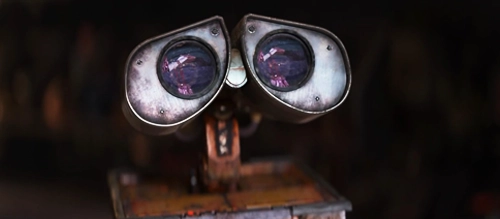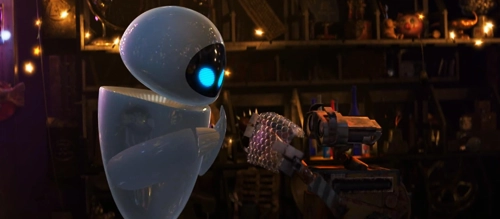‘WALL-E’ at 15 – Review

WALL-E (2008)
Director: Andrew Stanton
Screenwriters: Andrew Stanton, Jim Reardon
Starring: Ben Burtt, Elissa Knight, Jeff Garlin, John Ratzenberger, Kathy Najimy, Sigourney Weaver, Fred Willard
WALL-E was Pixar Animation Studios’ ninth feature-length movie and 2008’s ninth highest-grossing film. But with worldwide takings ‘only’ a little over $521million, it doesn’t even come close to Pixar’s top-grossing movies – Incredibles 2, Toy Story 3 & 4, and Finding Dory have all raked in over $1billion. While it didn’t hit the top spot in terms of overall gross, WALL-E was the most expensive animated film to be produced at that time. Regardless of cost or earnings, what WALL-E achieved in storytelling makes it an outright classic. Disney, Pixar, or otherwise.
In a not-too-distant future, Earth has been left in an uninhabitable state by humans, so they flee to space while waste allocation robots clear up their mess. WALL-E (Ben Burtt) is one such robot. After countless years of solitude, WALL-E has developed a personality. He is sentimental, cheeky, curious, but most pertinently, he’s lonely. He is programmed to conduct his duty, but he cannot help but observe and collect things – intrigued by the human lives that once ran rampant on the planet he now calls home. He loves musicals and sees beauty in even the inanest of objects. One day, EVE (Elissa Knight) arrives with the simple directive of finding vegetation, thus proving that Earth is habitable again. The robots bond. WALL-E is obviously smitten.
The first half of WALL-E is essentially a silent movie, brimming with slapstick humour, olde time musical numbers and a loveable klutz in the spotlight. WALL-E’s screen presence is as powerful as any Hollywood A-lister. It is incredible how expressive the animators made WALL-E without dialogue, all the depth of emotion emanating from those adjustable eyes and saggy tracks. What they achieved with EVE is bordering on unbelievable. EVE is a sleek white robot with nothing more than arms, a gun, blue LEDs for eyes, and a green blinking light in the shape of a plant. And yet, we are left in no doubt when these two machines are happy, sad, furious, or falling in love. The montage of WALL-E caring for EVE after a brief shut down rivals any chivalrous Jane Austen hero.
How much we eventually become invested in this pair without conversation between them, without much action, is true testament to the skill of the team behind the movie. The small speaking cast of ten (and that includes MacInTalk, a text-to-speech computer programme, and the snippets of Michael Crawford and Marianne McAndrew who appear in the clips of 1960s musical Hello, Dolly! that WALL-E loves so much) allows for breathing space. It allows moments to linger and details to be sewn into the intricate setting.
The second half of the film sees EVE and WALL-E join the humans up in space on a giant ship called the Axiom. Their dalliance amongst the stars is beautiful, using techniques honed in the weightless underwater scenes of Finding Nemo (2003) – also directed by Andrew Stanton. Once aboard the Axiom, action kicks up a gear and it becomes a more typical children’s film. The two robots gather a motley crew of fellow service machines to deliver EVE’s directive and potentially start a revolution.

While centuries living alone made WALL-E self-sufficient and loveable, living in space has made humans lazy and dependant. The backdrop of these useless crowds bobbing along on their chairs amplifies the importance of WALL-E and EVE. The ship’s sort of ambitious captain (Jeff Garlin) realises how important these machines are and becomes the mouthpiece for all the words EVE and WALL-E are incapable of saying.
The film’s themes are broad and adult in nature – consumerism, environmental issues, corporate greed – but they are balanced beautifully with more typical features of a children’s film. Humour, music, a protagonist that isn’t an adult, and of course an animal sidekick. When tackling themes of this nature it is possible to appear didactic or alternatively, lacking in integrity. However, the strength of the storytelling supersedes any of those concerns, and the comparative lack of merchandise, spin offs or sequels linked to WALL-E make the fact that one of the planet’s biggest corporations is telling us about corporate greed just that bit more palatable.
WALL-E is beautifully animated, breathtakingly detailed, and includes all the humour and action we have come to expect from a Pixar feature. It has a moral tale in the forefront but isn’t saccharine or preachy and the message has sadly not become any less relevant in the fifteen years since it was released. But even with the heavy subject matter it is ultimately a film about hope. Hope and robots.
Score: 22/24

